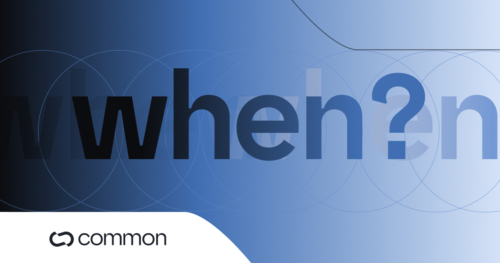The bridging capabilities between Aleph Zero and Ethereum are coming to Common. Let’s take a look at what the flow looks like!
MOST is the gateway between Aleph Zero and Ethereum, opening up the Aleph Zero network to external liquidity and bringing first wrapped stablecoins to use in the ecosystem. Stablecoins are paramount for a DEX to ensure a smooth trading experience–just like the UX design itself.
This is why we have built MOST directly into Common–to ensure the ease of use and uninterrupted flow of actions for users.
Here’s how it works.
The UI flow of MOST in Common
We want to make using Common as easy as it can be–this is why MOST will be an integral part of the UI, just one click away from the swaps and liquidity pools.
First, you’ll need wallets for both ends of the bridging, that is one for Ethereum and one for Aleph Zero. The video above was recorded with MetaMask as an example, but you can use whatever other wallet you like. SubWallet, for instance, supports both Ethereum and Aleph Zero.
When selecting a token to bridge from Ethereum to Aleph Zero, you’ll see a breakdown of all the fees and estimated time of arrival. While we’re used to instant transactions on Aleph Zero, the transaction starts on Ethereum; this is why the estimates seen in the UI are around 10-15 minutes, which is what we’re expecting in times of standard network activity.
From there, all you have to do is sign the transaction on the Ethereum side and wait until it appears in your wallet on Aleph Zero!
MOST features
Beyond the easy-to-use user interface, MOST comes in Common with several features:
- No protocol fees on either side of the bridge (Ethereum and Aleph Zero);
- Seamless onboarding – when bridging from Ethereum, users receive AZERO to cover a portion of their ETH transaction fees. There’s no need to get AZERO before you can start bridging, as Common will simply provide you with some of the coins. The exact amount will be adjusted from time to time, depending on how high the ETH transaction fees are;
- Token bridging whitelist to ensure liquidity concentration and fraud prevention. Several tokens will be supported at the release, while the support for other tokens will be introduced gradually based on community feedback;
- Simple and secure smart contract design–bridged tokens are locked on one end and minted on the other. When going the other way around with the same pair (i.e. moving USDT from Aleph Zero to Ethereum), they are burnt and unlocked;
- MOST will be maintained by a set of trusted Guardians—business entities and Aleph Zero Mainnet validators.
Wen?
Common AMM will be released on the Mainnet together with MOST to ensure stablecoins, ETH, and other tokens can flow on-chain in a trustless manner.
While Common AMM has reached a stage that could be released to the Mainnet, we’re continuing with the release schedule of the next features and improvements while the development on MOST is progressing independently.
Here are the major milestones for MOST development to keep an eye on before it’s released:
- MOST release on Testnets – Ethereum and Aleph Zero;
- MOST Auditing process – audit and implementation of the proposed fixes.;
- Ensuring that MOST operates well on Testnet for a sufficient amount of time;
- Common + MOST Mainnet release.
Stay tuned for the updates!



